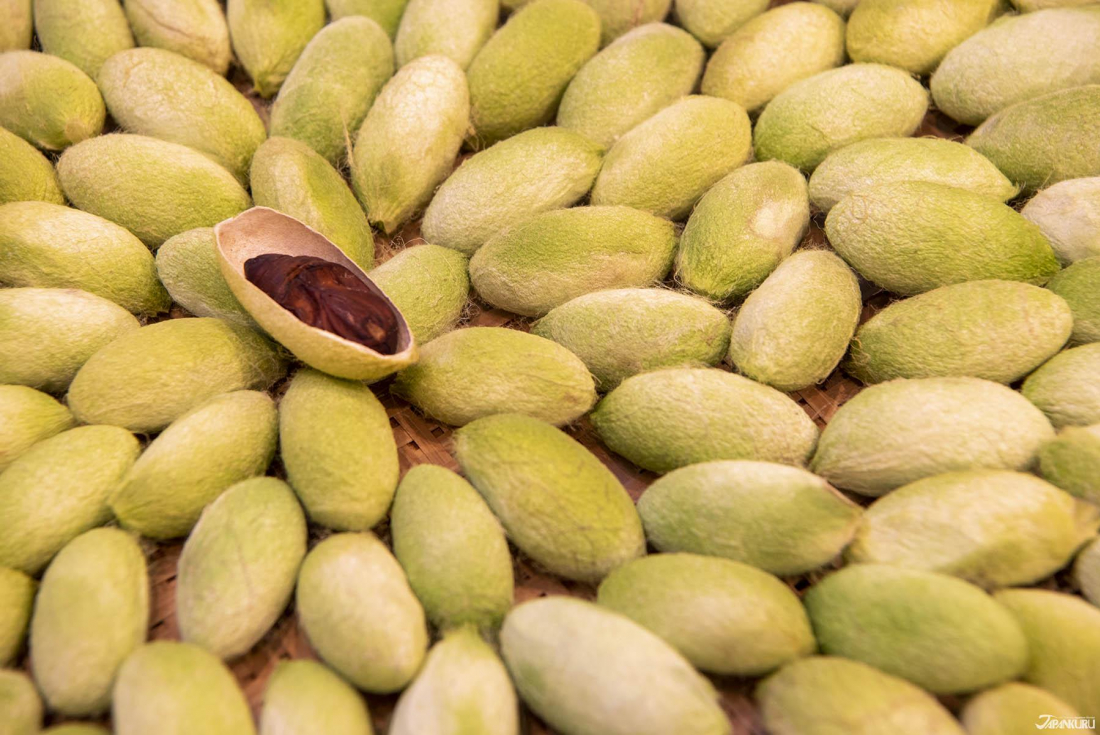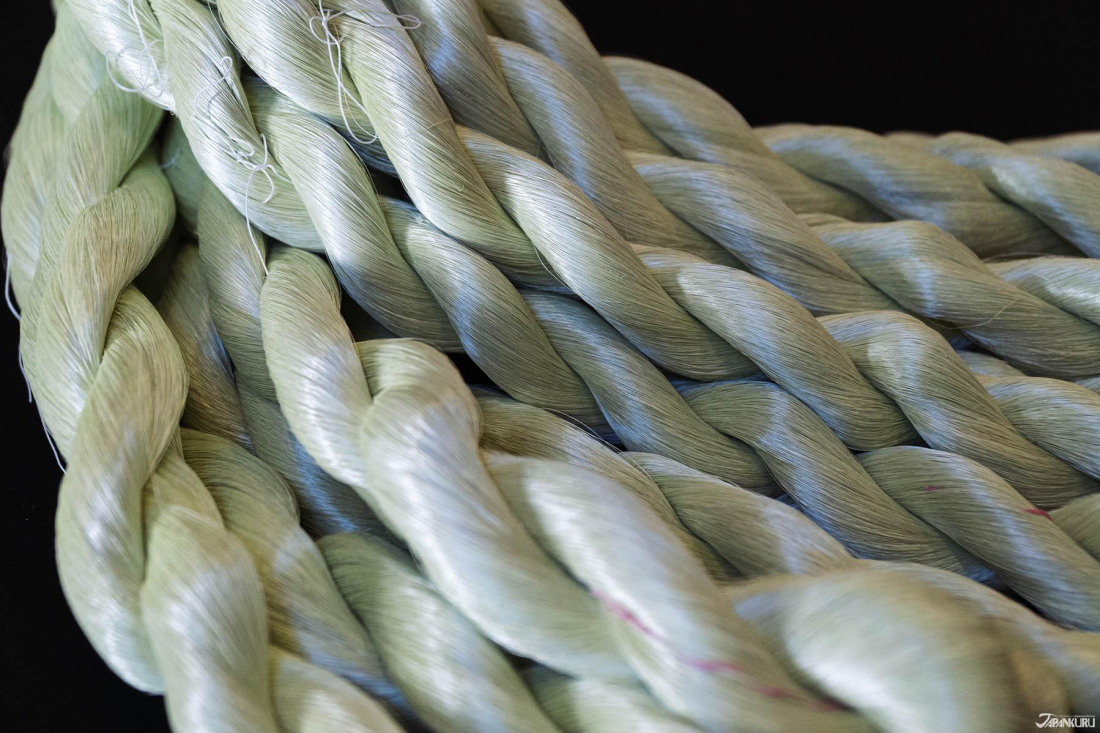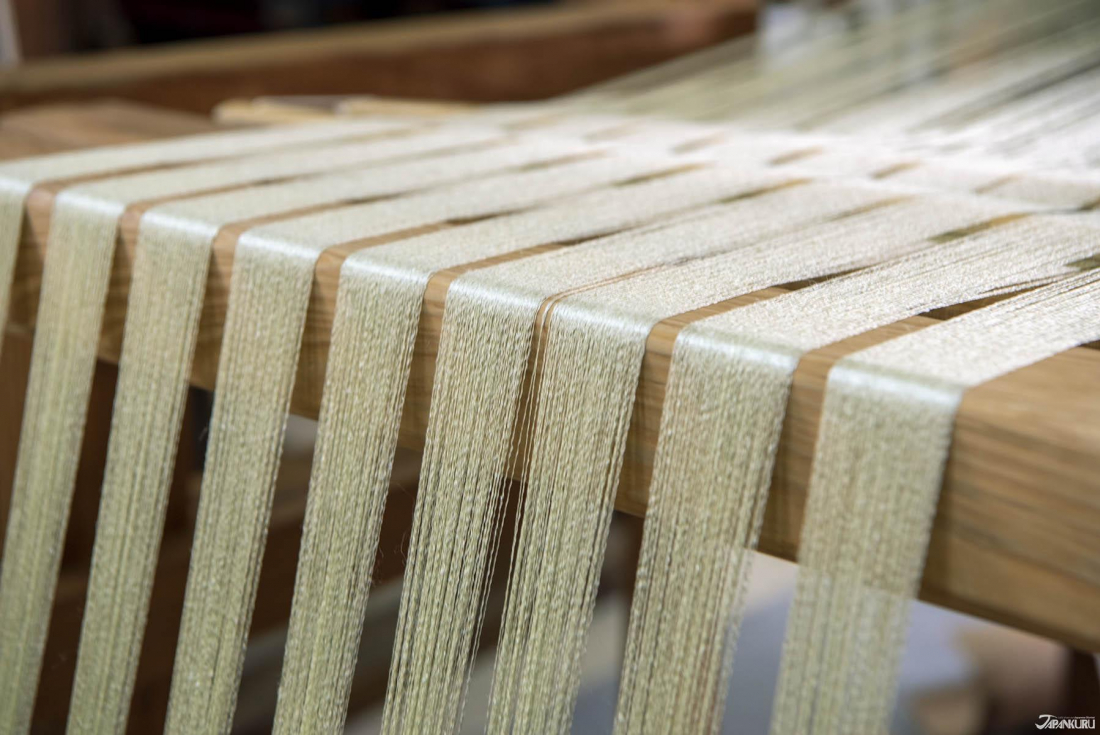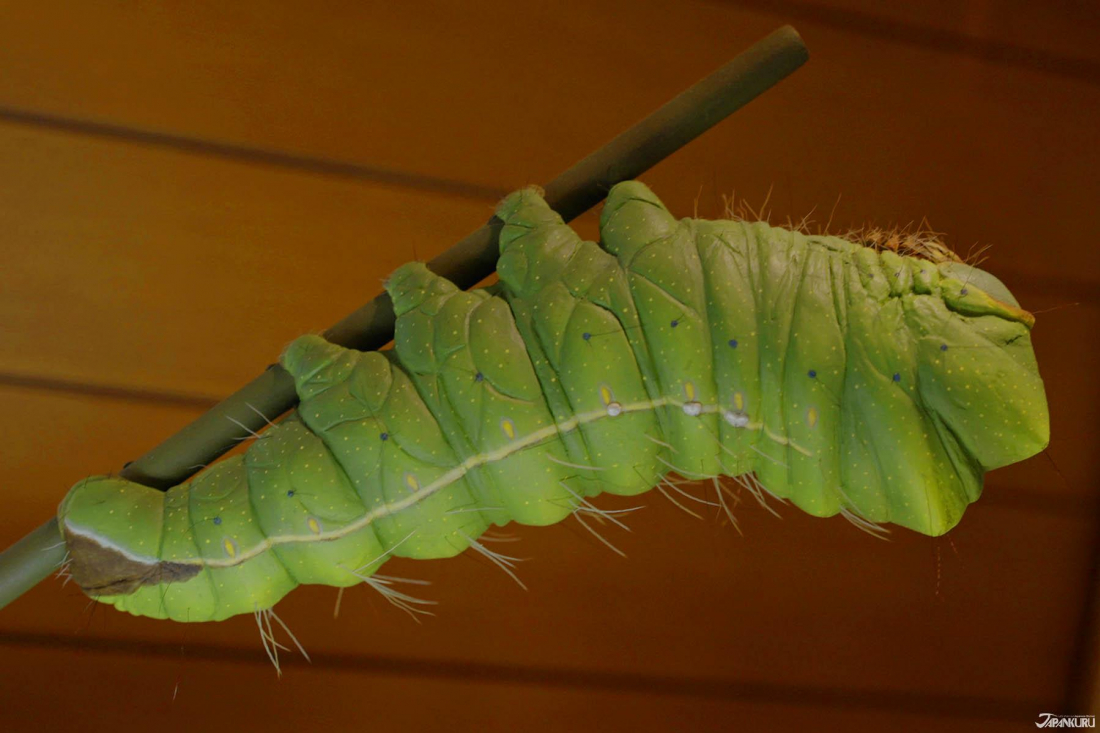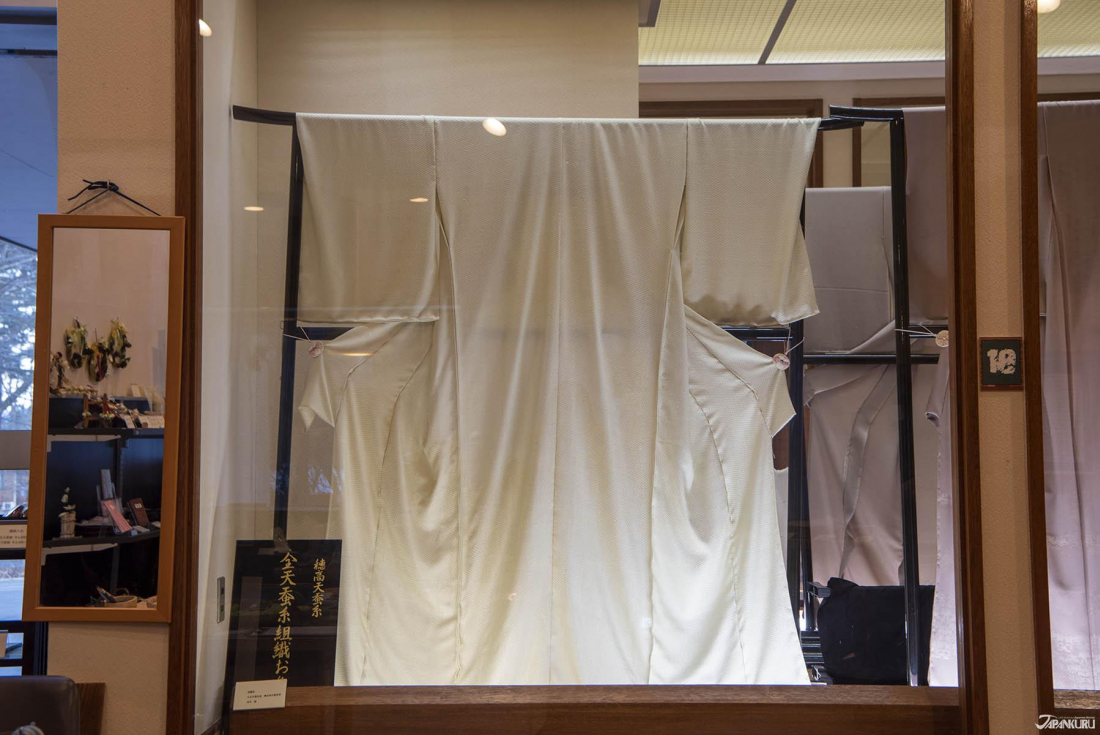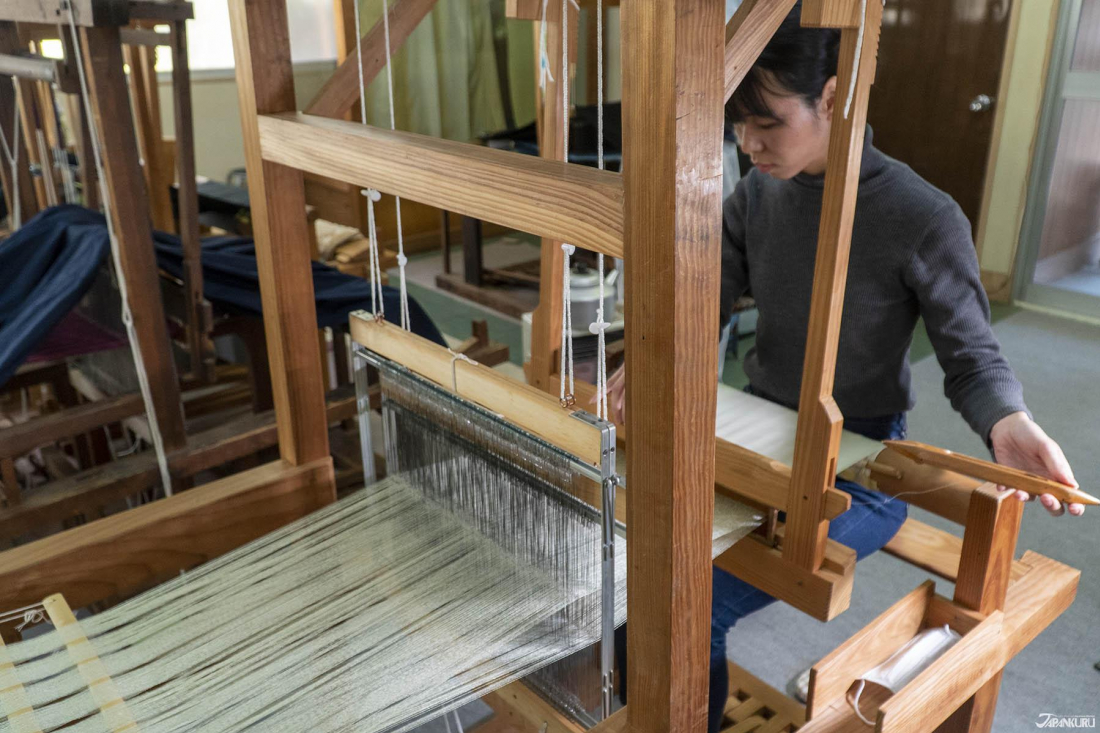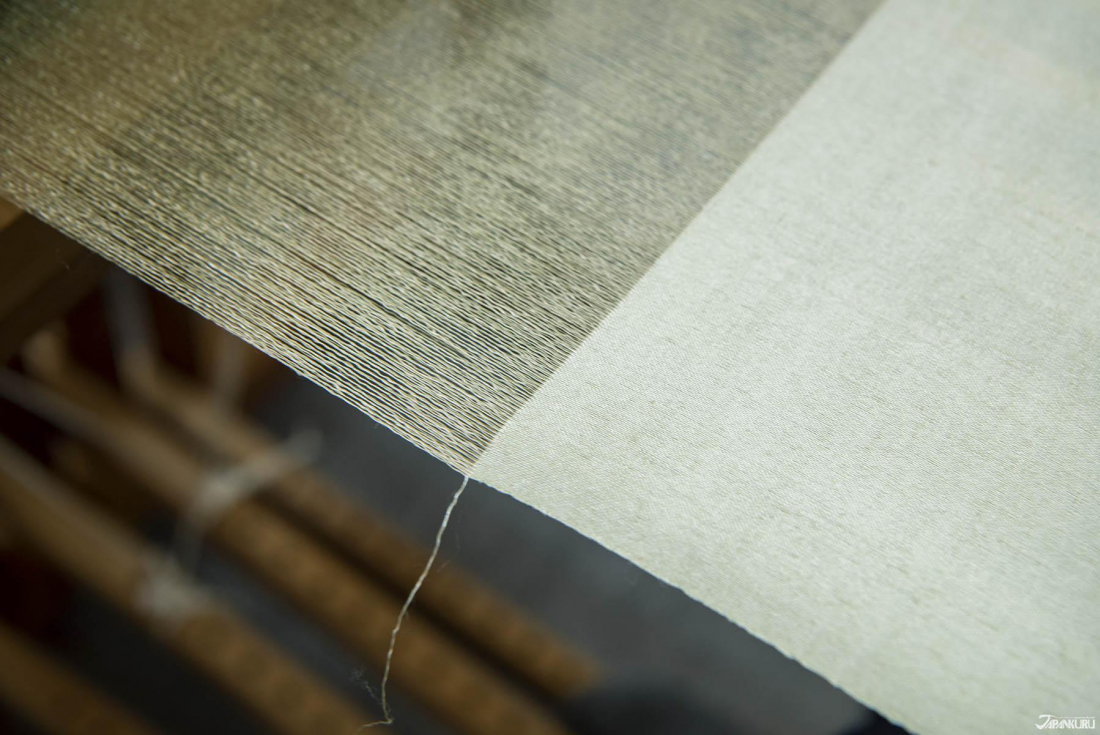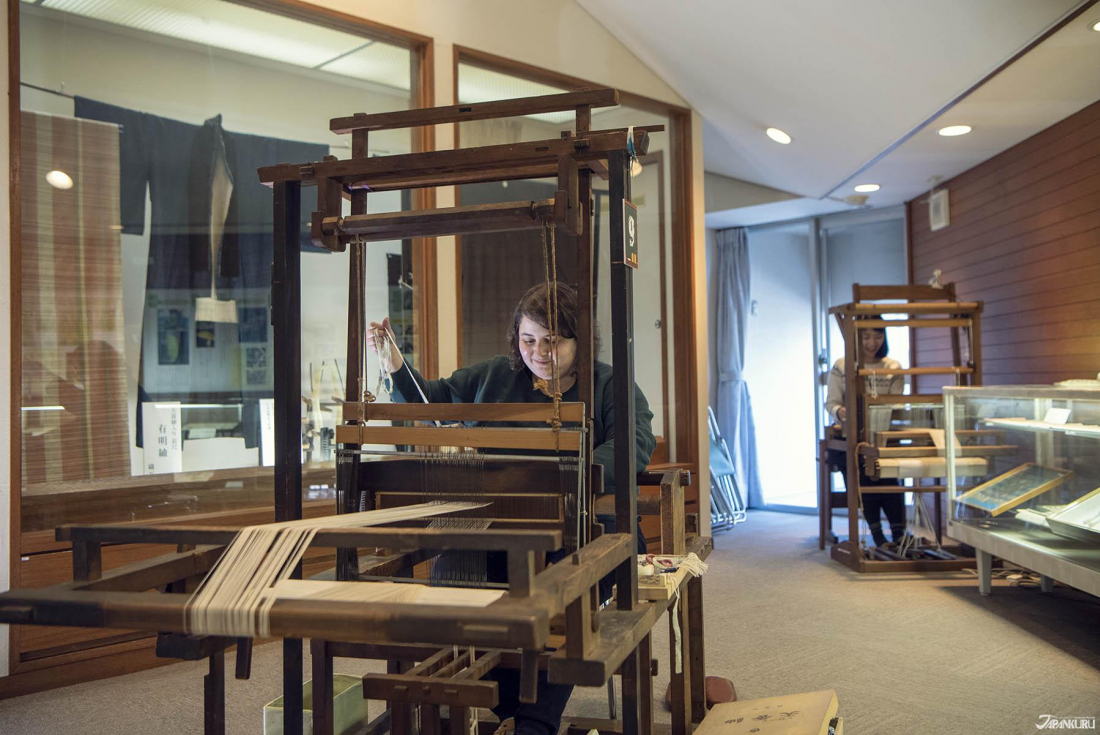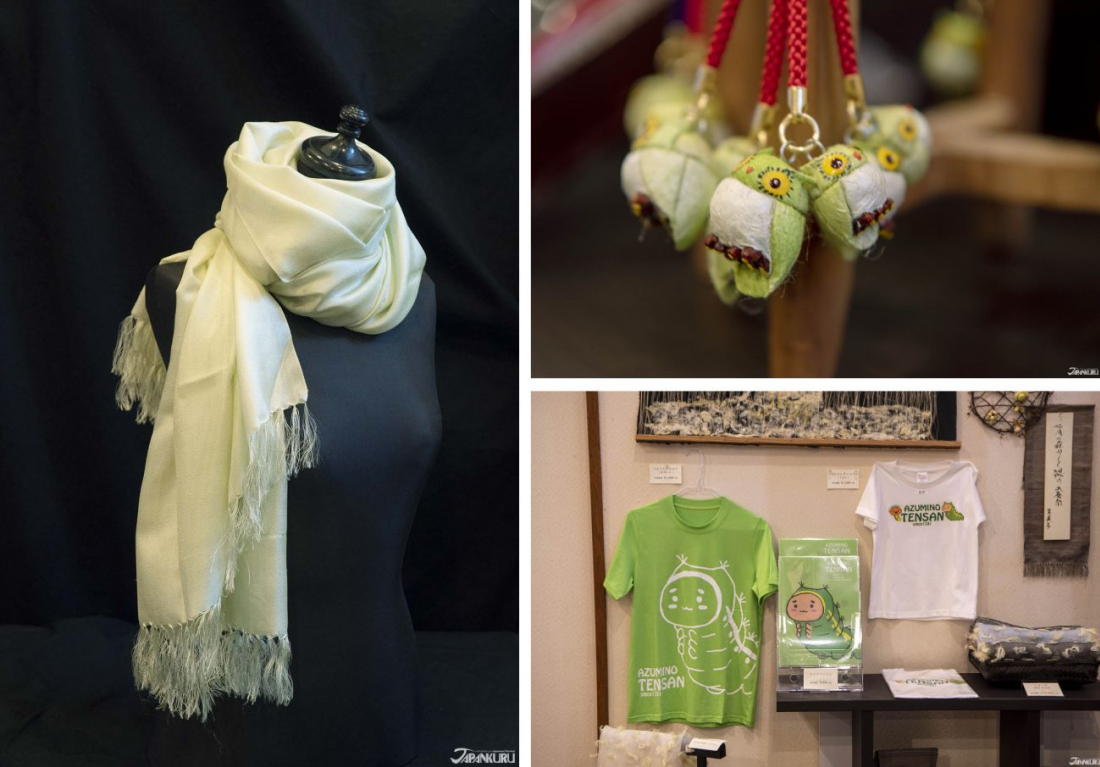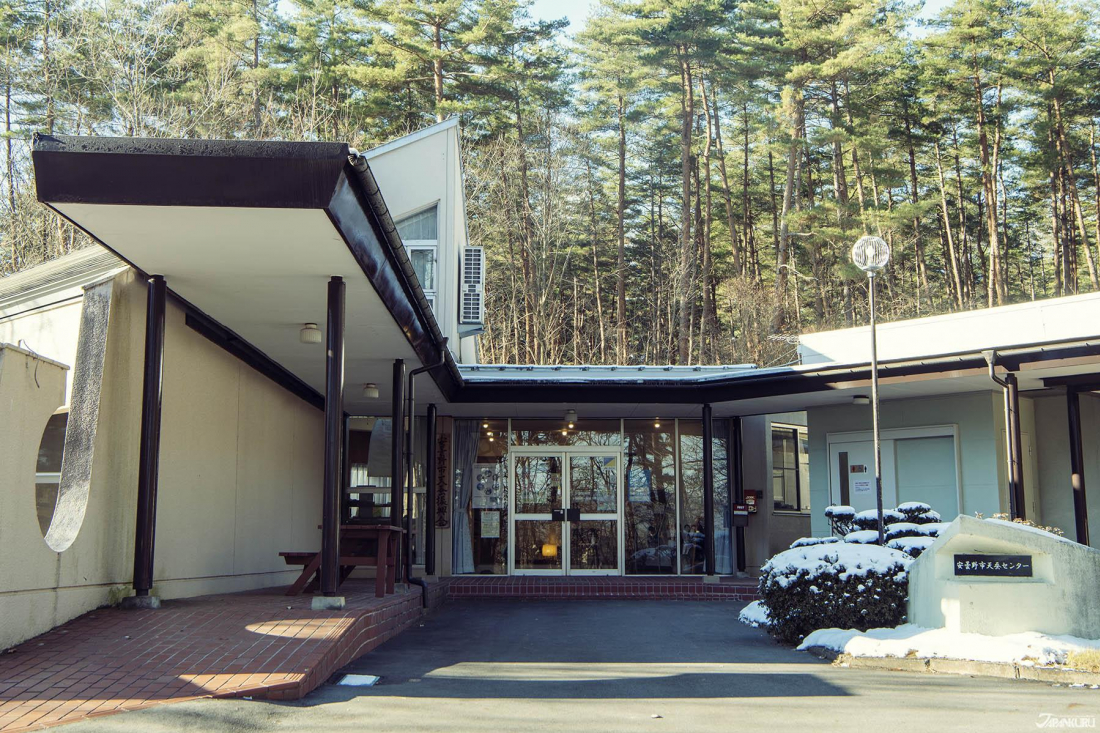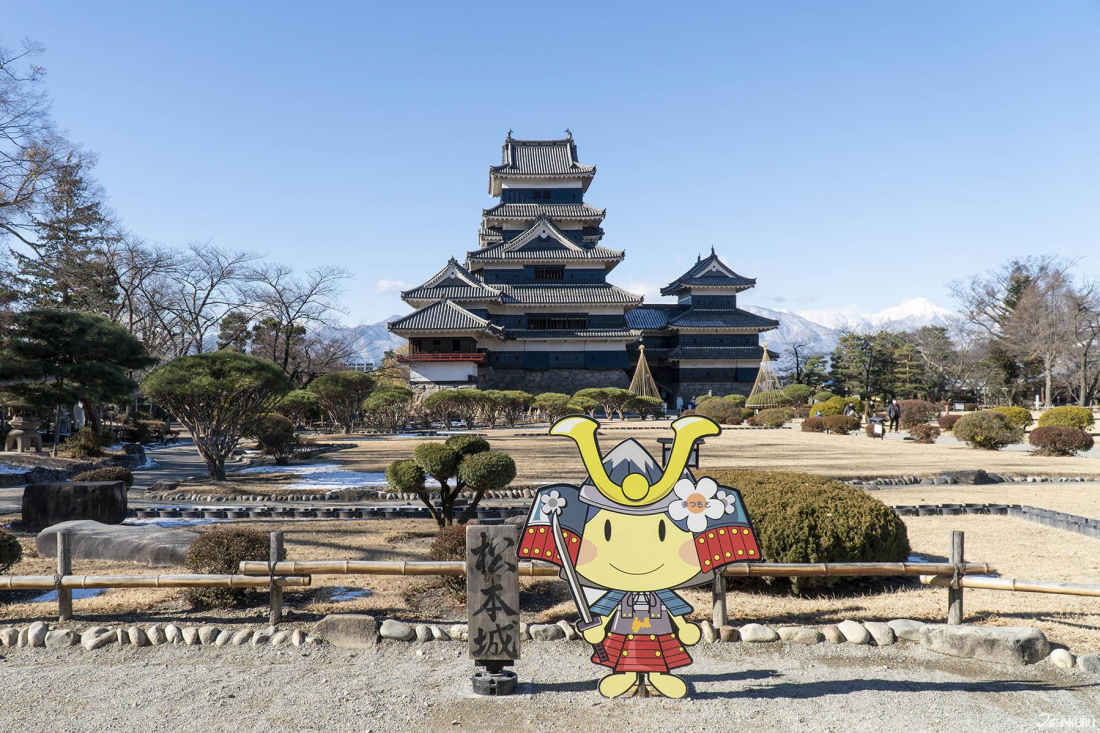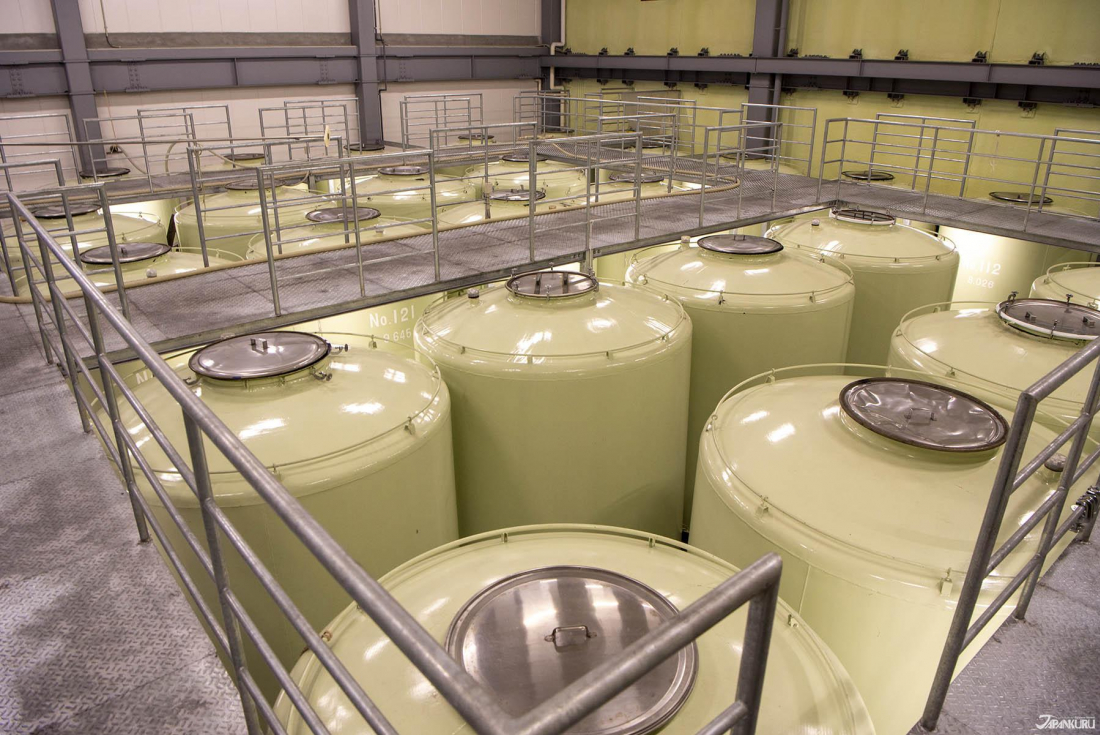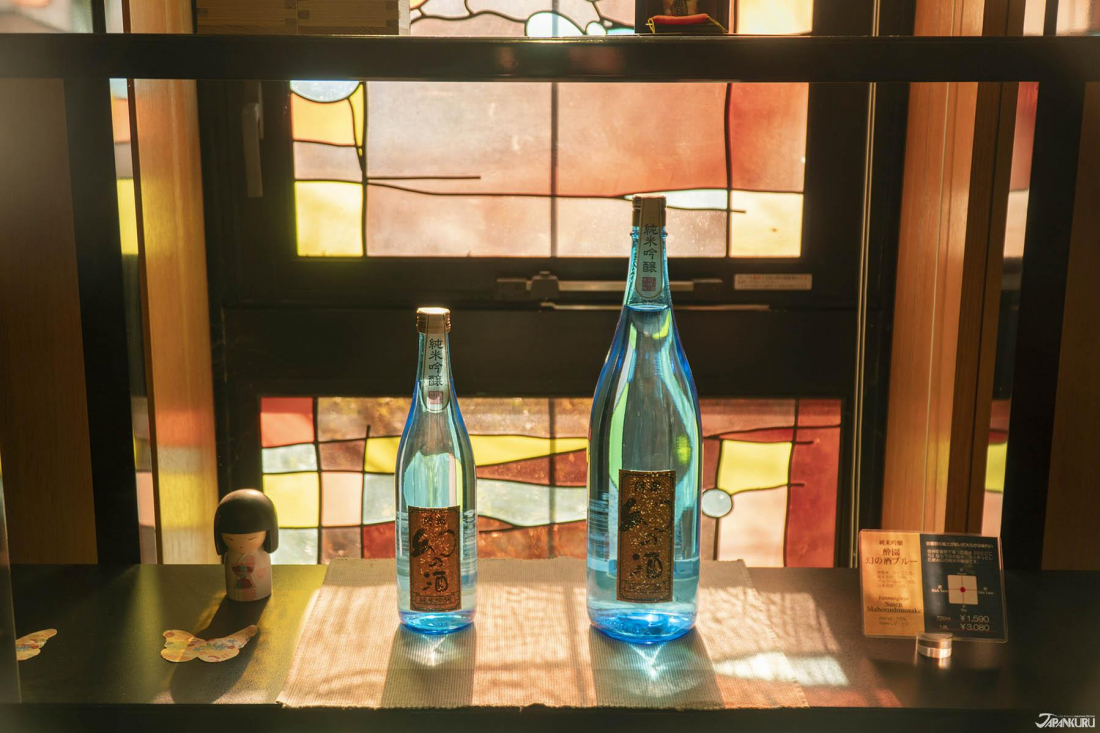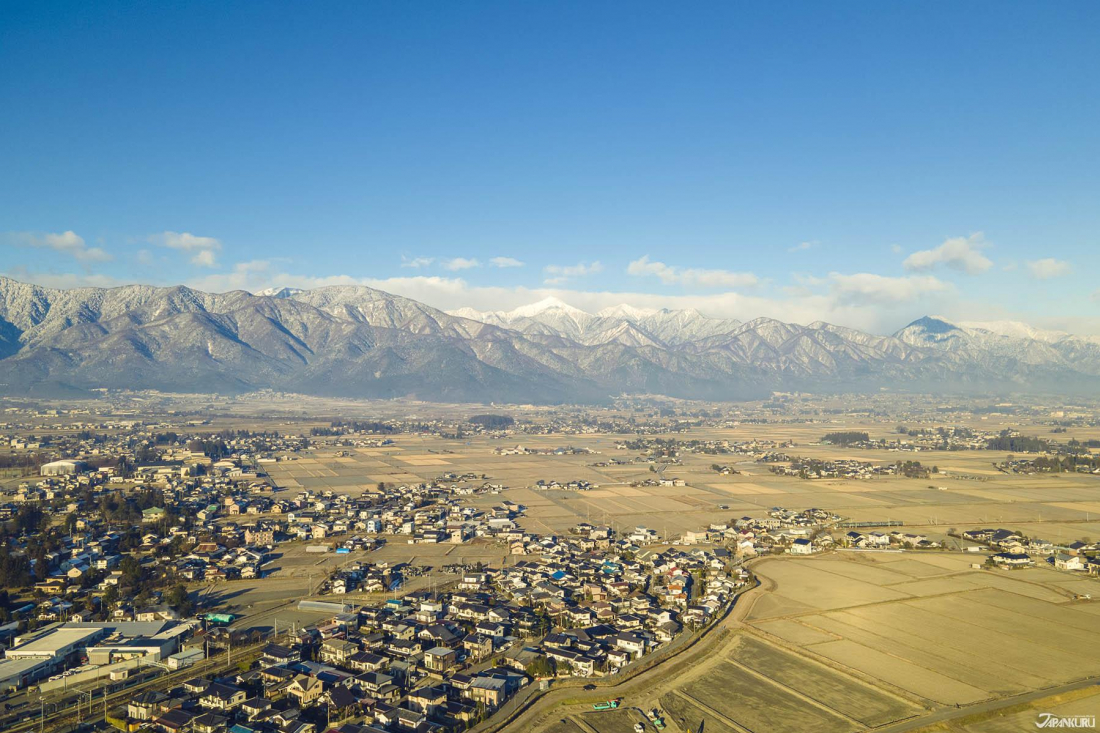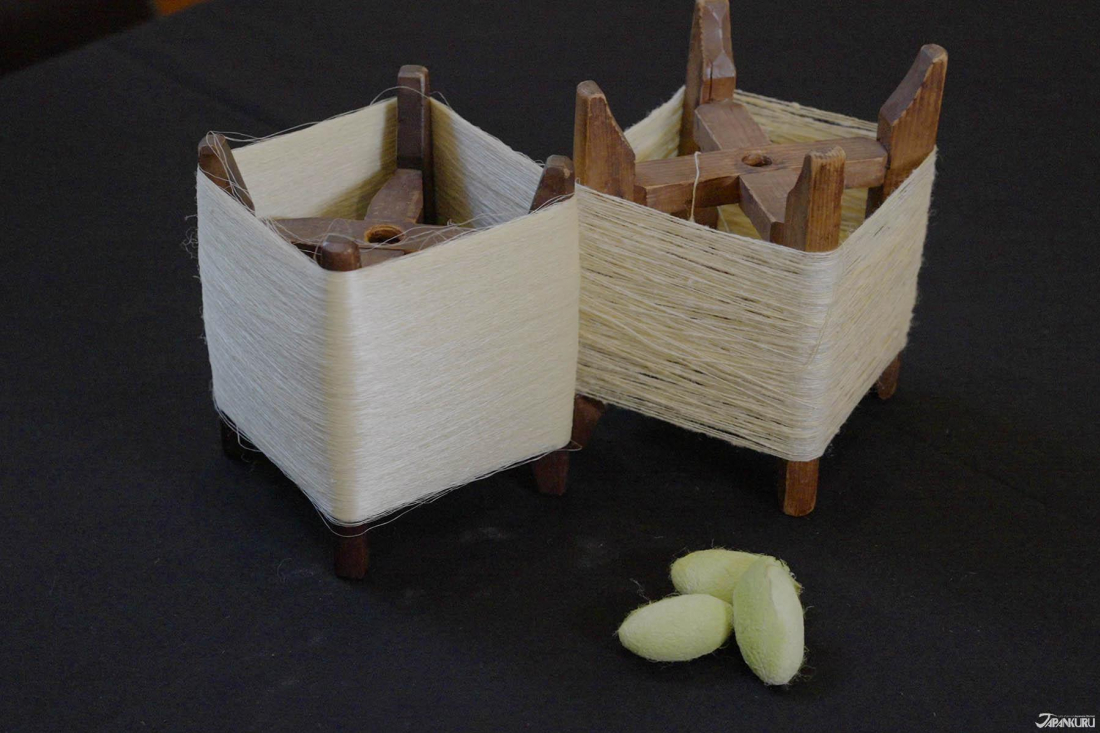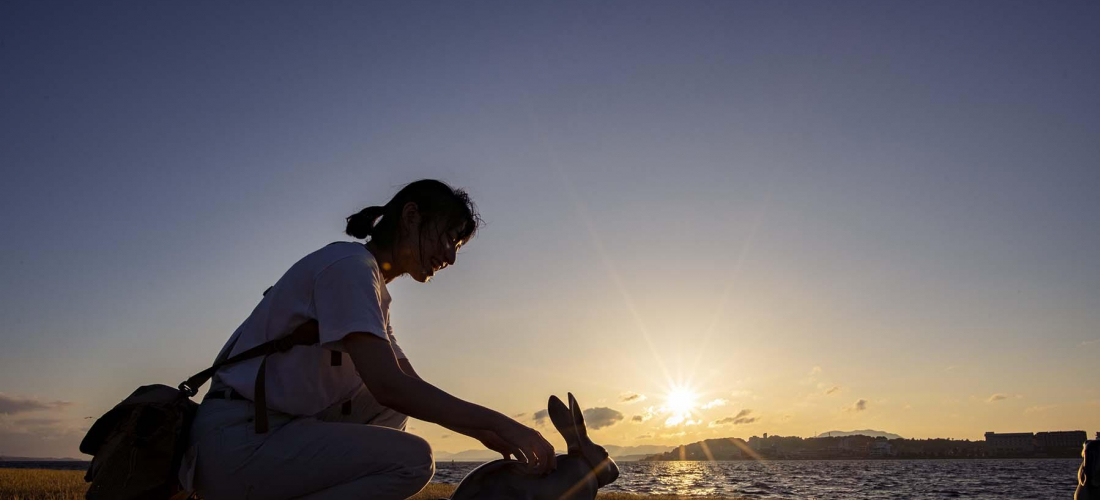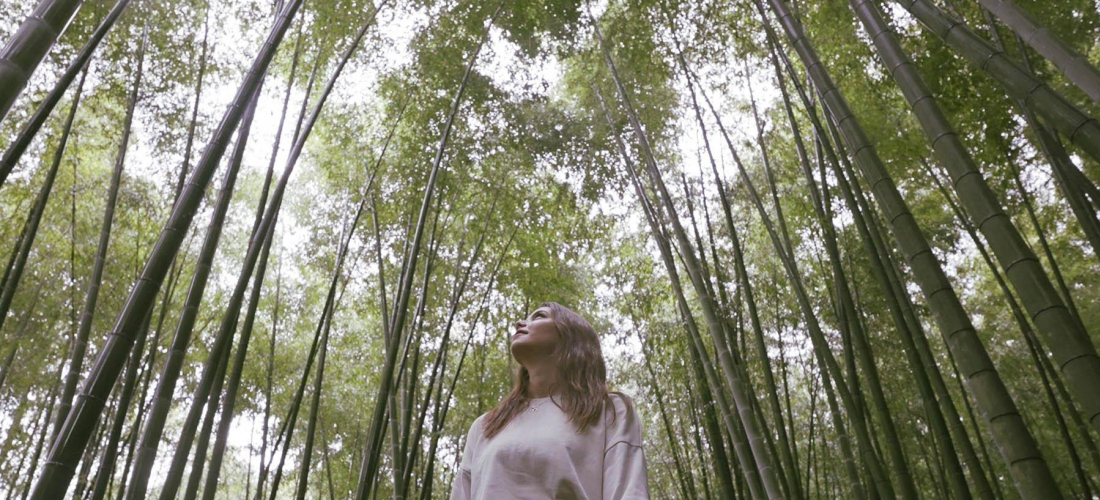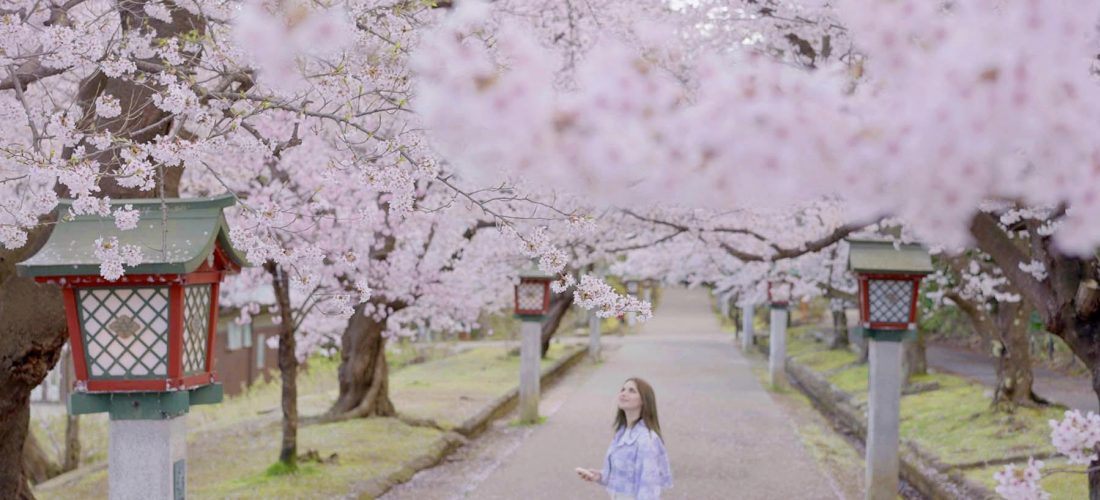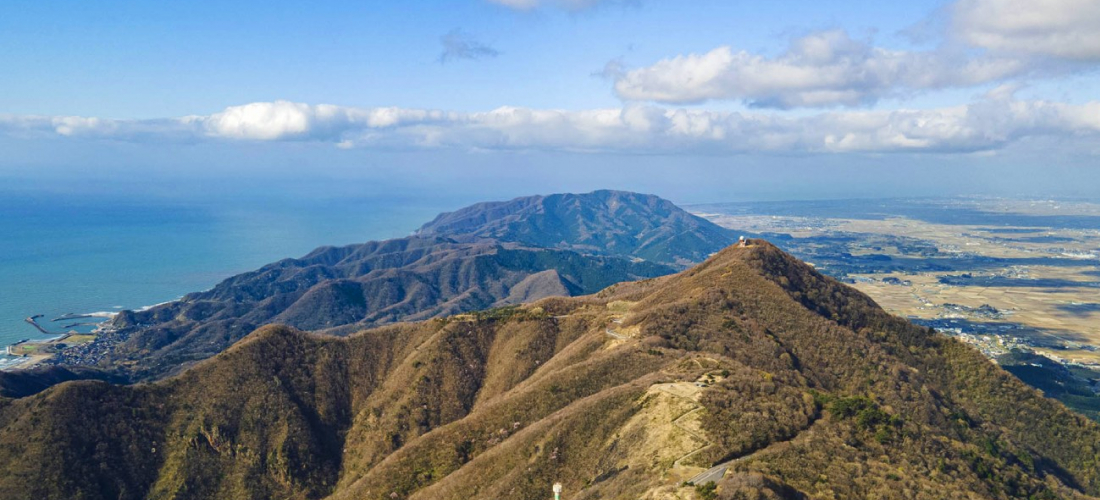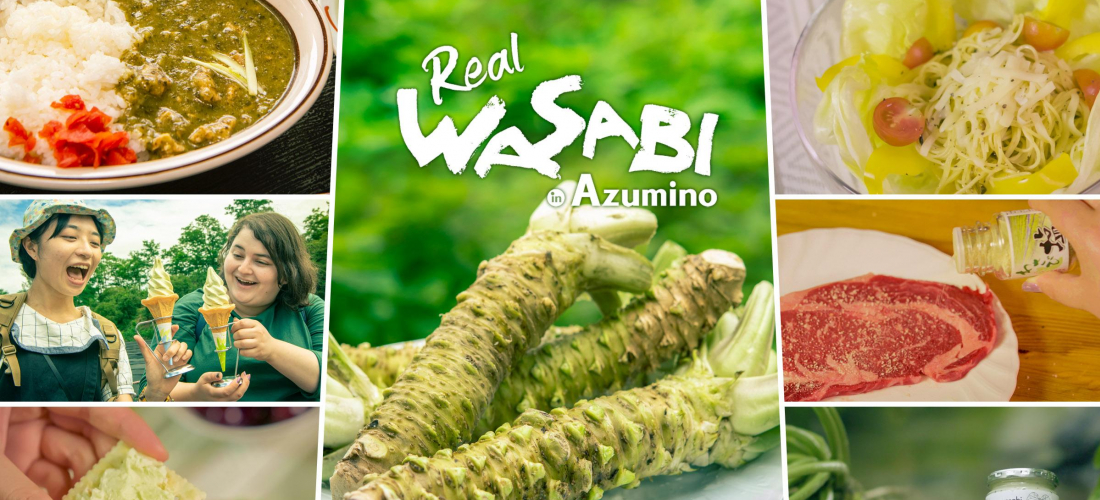
CONTENTS
Au centre Azumino Tensan, vous pouvez en apprendre davantage sur la soie sauvage la plus fine du Japon, la voir en train de se faire et même en rapporter une pièce comme un souvenir élégant.
La soie Tensan d’Azumino ・ Qu’est ce que le Tensan?
Tensan est une sorte de soie sauvage japonaise, connue pour son lustre, sa souplesse et sa teinte verte naturelle. Le nom japonais (天蚕) signifie littéralement «le ver à soie céleste», il n'est donc pas surprenant que le tissu brillant soit fait de vers à soie élevés le long des Alpes japonaises, surnommé «le plafond du Japon». L'histoire de la culture tensan remonte aux années 1780, lorsque les habitants de Nagano ont commencé à les élever dans une partie de ce qui est aujourd'hui la ville d'Azumino. Alors que les vers à soie communs se nourrissent de mûriers, les vers à soie endémiques tensan pse développent sur les feuilles de chêne qui prospèrent dans la région d'Azumino. Dans les années 1850, les habitants avaient commencé à produire du fil tensan, et malgré quelques barrages routiers en cours de route, il y a maintenant environ 100 fermes autour de Nagano qui élèvent ces vers à soie rares. Si vous recherchez des souvenirs japonais uniques fabriqués localement, vous ne trouverez rien de plus beau que la soie tensan.
Le centre Azumino Tensan (parfois appelé le musée de la soie de Tensan), un établissement confortable niché dans les bois de Nagano, est de loin le meilleur endroit pour en savoir plus sur ce matériau noble et exclusivement japonais.
Le Centre Azumino Tensan regroupe plusieurs choses en un: un musée où vous pouvez apprendre comment les vers à soie tensan sont élevés et comment le fil est déroulé, une école de tissage où les élèves s'entraînent à utiliser un métier à tisser pour créer un tissu tensan délicat (et où les visiteurs peuvent essayer le tissage eux-mêmes!), et une exposition des produits les plus élégants en soie tensan ― à la fois des produits que vous pouvez acheter, mais aussi des objets trop précieux pour être vendus. Si vous êtes intéressé par les traditions japonaises, la culture à l'ancienne, les techniques artisanales, le tissage, les textiles, les insectes ou tout simplement de belles choses, voyez pourquoi vous devriez ajouter le centre Tensan à votre itinéraire la prochaine fois que vous serez à Nagano.
Visiter le centre Azumino Tensan
En visitant le centre Tensan, vous apprendrez rapidement certaines choses sur la soie tensan, surtout si vous rencontrez le président du comité de promotion de Tensan, Tadashi Taguchi. Ce qui est avant tout mis en valeur est bien sûr la qualité du tissu. Rien qu'en regardant les fibres, vous pouvez voir que les fils de soie soigneusement tirés des cocons tensan bouillis ont une lueur unique, qui se traduit par un lustre presque brillant lorsqu'ils sont tissés. La soie normale peut avoir une belle brillance, mais la soie tensan est appelée «le diamant des textiles», grâce à la façon dont elle réfléchit la lumière. De plus, la construction creuse du fil tensan lui confère une excellente rétention de chaleur, mais si cela vous fait penser qu'il doit être fragile, c'est bien le contraire! Les fibres sont particulièrement résistantes et particulièrement flexibles, contrairement à la soie standard, ce qui donne aux fils et au tissu une élasticité distinctive. Tous ces facteurs s'ajoutent à un textile précieux: la soie tensan se vend environ 700000 ~ 1000000 yens par kilogramme (environ 7000 ~ 12000 € / kg), tandis que la soie normale est plus proche de 20000 yens par kilogramme (environ 210 € / kg).
Si vous êtes prêt à en savoir plus sur le tensan, la moitié du Tensan Center est dédiée à une variété d'expositions, certaines éducatives et d'autres présentant de beaux objets tensan. Un mur entier raconte l'histoire du ver à soie tensan, également appelé par le nom yamamayu (ヤ マ マ ユ) en japonais, ou le nom scientifique Antheraea yamamai. Ces bombyx (le nom du ver une fois métamorphosé) sont liés à d'autres originaires de la Chine et l'Asie du Sud-Est, mais le bombyx tensan n'est originaire que du Japon!
Au centre tensan, les bombyx tensan sont élevés dans des paniers, et les petits vers à soie timides sont élevés avec un régime régulier de feuilles de chêne non loin sur la route. Pendant la bonne saison, vous pouvez même sortir les voir, même s'ils aiment se cacher parmi les feuilles! Enfin, les cocons sont bouillis et déroulés, pour faire la base de toute la soie tensan. Les cocons qui ne sont pas endommagés sont transformés en fils des plus raffinés, mais les cocons avec des imperfections ne sont certainement pas perdus. Certaines des fibres sont peluchées en une sorte de laine de soie et filées en un fil plus épais, et certains des cocons sont envoyés à des marques comme Shiseido pour être utilisés comme extraits dans des produits de beauté.
Avec une brillance aussi élevée (et également une valeur élevée), le fil tensan est traditionnellement utilisé le plus souvent pour la décoration, et pourrait être trouvé dans la broderie ornant un kimono en soie extrêmement haut de gamme. Le Centre Tensan a cependant quelques trésors plus rares exposés dans des vitrines dédiées aux articles en soie tensan. Ce majestueux kimono est composé à 100% de soie tensan, et la photo ne rend pas justice au tissu ― vous devrez le voir en personne pour apprécier l'éclat de la soie sauvage.
Les métiers à tisser Tensan
L'autre moitié du Tensan Center est dédiée à un atelier avec une poignée de métiers à tisser utilisés pour tisser les fils tensan en feuilles de tissu, où les visiteurs peuvent également voir comment tout est fabriqué. L'une des qualités positives des fibres tensan est qu'elles sont flexibles et élastiques, mais que leur élasticité rend presque impossible le tissage sur un métier à tisser électrique, comme presque tout le tissu est produit de nos jours. Au lieu de cela, des artisans tisserands talentueux s'assoient sur de grands métiers à tisser en bois et naviguent habilement les fils tensan à travers, encore et encore, ce qui est un processus lent et méticuleux.
Le tissage avec fils tensan demande un ensemble spécial de compétences et beaucoup de pratique, et les tisserands avec ce type de compétence sont rares, donc l'une des missions du centre Tensan est de soutenir la croissance des artisans tensan avec leurs propres programmes éducatifs! Des étudiants de tout le Japon viennent au centre pour apprendre à tisser sur les énormes métiers à tisser avec des dizaines de fils ー l'étudiant ci-dessus est venu à Azumino d'Okinawa il y a un an, pour apprendre au Tensan Center!
Il faut près de deux mois, en moyenne environ 50 jours, à un tisserand expérimenté pour finir de fabriquer un «tanmono» complet, qui est la quantité de tissu utilisée pour fabriquer un kimono.
Lors de votre visite, vous remarquerez peut-être que les artisans du centre sont parfois occupés à teindre des fils de soie, mais ces fibres ne sont en réalité pas du tout de la soie sauvage tensan, mais de la soie standard! Il s'avère que le tensan ne prend pas très bien la teinture, il conserve donc toujours sa couleur vert pâle naturellement élégante.
Bien sûr, vous pouvez essayer le tissage sur un métier à tisser au Centre Tensan sans consacrer des années de votre vie à l'art! Cependant, ils vous lanceront avec un projet plus simple. Au lieu de tisser des fils fins dans le tissu de kimono, ils fournissent des bandes de tissu qui peuvent être tissées en un joli petit dessous de verre! Il est facile de voir comment les étudiants du centre pourraient tomber amoureux du tissage sur les métiers à tisser ー nous tous membres de l'équipe Japankuru avons finis addicts après seulement quelques minutes à fabriquer un sous-verre! On a ainsi pu faire des souvenirs amusants à rapporter à la maison.
Là encore, après une journée passée à apprécier les nombreuses qualités uniques de la soie tensan, vous voudrez certainement apporter des souvenirs faits de ce beau matériau! La boutique du Tensan Center propose toutes sortes de produits tensan à vendre, des jolis porte-clés et accessoires en cocons non transformés aux articles finement tissés comme les cravates et les foulards en soie sauvage, qui sont moins raisonnables!
Si vous visitez avec des enfants, ne soyez pas surpris s'ils tombent amoureux de la mascotte étonnamment adorable du Tensan Center! Le personnage du ver à soie a été conçu et illustré par un membre du personnel du centre, et vous pouvez emporter chez vous des chemises et des t-shirts arborant son drôle de petit visage.
Le Centre Azumino Tensan est une visite étonnamment intéressante et divertissante, juste un peu hors des sentiers battus. La prochaine fois que vous serez dans la région, ne manquez pas une chance de passer pour voir les petits vers à soie se gaver de feuilles de chêne, essayer le tissage au métier à tisser et admirer la magnifique soie sauvage fabriquée avec des matériaux rares et beaucoup de talent artisanal !
Azumino Tensan Center
3618-24 Hotakaariake, Azumino, Nagano
Horaires:
Avril à octobre: 9:00 – 17:00
Novembre à mars: 9:00 – 15:00
Entrée gratuite!
Official Website (en)
Profitez aussi d’Azumino!
Château Matsumoto
Prêt à visiter le Tensan Center, mais vous souhaitez compléter votre itinéraire lors d'un voyage à Nagano? Eh bien, il y a de fortes chances que vous arriviez à Azumino via la ville de Matsumoto, il n'y a donc pas de meilleur endroit pour commencer que le château de Matsumoto! Ce château est l'un des rares restants au Japon qui n'a pas été détruit et reconstruit plusieurs fois au cours des derniers siècles, et la structure actuelle (y compris les intérieurs en bois et les pierres extérieures) remonte à l'année 1594! À cette époque, le château abritait de célèbres samouraïs et seigneurs féodaux comme Tokugawa Ieyasu, l'un des trois «Grands Unificateurs» du Japon.
Vous pouvez monter les escaliers inhabituellement hauts et ressentir l'histoire à travers la plante de vos pieds (et dans la brûlure de vos cuisses). Du haut de la plus haute tour, vous avez une vue magnifique sur les environs, en particulier sur les montagnes au loin. Et ce n'est pas un hasard! En tant que château de plâteau, c'était autrefois une question de sécurité pour les guetteurs de pouvoir voir les ennemis arrivant de loin, et Matsumoto a donc une histoire de lois interdisant les grands bâtiments à proximité.
Matsumoto Castle (松本城)
4-1 Marunouchi, Matsumoto, Nagano
Official Website (en)
Brasserie de Sake EH
Le nom EH Sake Brewery peut ne pas sembler particulièrement traditionnel, mais il s'avère que cette brasserie fabrique du saké depuis la fin de la période Edo (1603-1868), principalement sous le nom de «Suien» (酔 園). Suien a été acheté par une plus grande entreprise en 2002, d'où vient le nom EH, mais ils perpétuent toujours les traditions à l'ancienne du brassage du saké japonais, en utilisant l'eau fraîche et claire qui fait d'Azumino une ville si verte.
Si vous êtes un fan du saké et que vous souhaitez voir comment il est fabriqué, les visiteurs peuvent aller dans les coulisses de la brasserie et jeter un œil au processus de brassage. Vous pourriez même regarder dans les énormes réservoirs et voir le saké en fermentation. Ensuite, EH Sake Brewery propose des dégustations dans une salle élégante à côté du hall, avec des vitraux et une sélection de leurs différentes bouteilles. L'une de leurs variétés les plus populaires s'appelle Otoko no Namida (男 の 涙), littéralement "les larmes des hommes"!
EH Sake Brewery (EH酒造)
1090-1 Toyoshinatakibe, Azumino, Nagano
Official Website (jp)
Ferme Daio Wasabi ・ Du Wasabi à Azumino
Contemplez la beauté d’Azumino par vous-même
Des hauts sommets enneigés des Alpes japonaises aux bois remplis de chênes en contrebas, vous entendrez les habitants d'Azumino vanter encore et encore les vertus des caractéristiques naturelles de la ville, et c'est cette même abondance naturelle qui en fait un endroit idéal. pour que le ver à soie tensan s'épanouisse. La prochaine fois que vous serez dans la région, un ciel bleu et de la soie sauvage vert pâle vous attendent pour sûr!
Pour d'autres infos et news sur le Japon, visitez Japankuru pour de nouveaux articles, et n'oubliez pas de nous suivre sur twitter, instagram, et facebook!
Details
NAME:Azumino Tensan Center (安曇野天蚕センター)
PROFILE
Follow us @Japankuru on Facebook, Instagram, and Twitter!
COMMENT
FEATURED MEDIA
VIEW MORE
Which snacks make the best Japanese souvenirs?~ Jaga Pirika ~ 일본과자 선물 뭐하지?~자가피리카 편~ #pr #calbee #jagapokkuru #japanesesnacks #japanesefood #japanesesouvenir #japantravel #japantrip #naritaairport #hokkaido #나리타국제공항 #일본여행선물 #흔하지않은기념품 #일본쇼핑리스트 #일본과자추천 #고구마과자 #일본간식추천 #일본면세점쇼핑 #개별포장 #일본감자칩 #도쿄나리타공항면세점 #현지인추천 #일본여행 #일본기념품리스트 #자가포쿠루 #자가피리카

Asakusa's Sanja Matsuri, one of the biggest festivals in all of Tokyo, is almost here! Make sure you check out the festival route so you don't miss all the festivities this May. #asakusa #sanjafestival #sanjamatsuri #asakusashrine #sensoji #sensojitemple #japanesefestival #shintoshrine #japaneseculture #tokyo #tokyotrip #tokyotravel #asakusasightseeing #matsuri #japantrip #japantravel #springinjapan #tokyotravel #japankuru #산자마츠리 #아사쿠사 #일본마츠리 #일본여행 #일본5월

Odaiba's DiverCity Tokyo Plaza is home to the famous real-size 20m-tall Unicorn Gundam, and the popular shopping center has even more Gundam on the inside! Check out the Gundam Base Tokyo on the 7th floor for shelves upon shelves of Gunpla, and the Gundam Base Tokyo Annex on the 2nd floor for cool anime merchandise. Both shops have tons of limited-edition items! #pr #odaiba #tokyo #tokyotrip #japantrip #japantravel #PR #divercity #divercitytokyoplaza #tokyoshopping #gundam #unicorngundam #gundambasetokyo #anime #otaku #gunpla #japankuru #오다이바 #다이바시티도쿄 #오다이바건담 #건담 #일본건담 #건프라 #건담베이스도쿄

Evangelion, in miniature!? Tokyo's SMALL WORLDS Miniature Museum is actually a must-see for anime lovers, thanks to the tiny Evangelion Hangar and Tokyo-III... plus a whole universe of other scenes both real and fictional. #smallworlds #smallworldstokyo #tokyotrip #tokyotravel #evangelion #eva #anime #miniature #miniatures #animefigure #japantrip #japantravel #에반게리온 #스몰월드 #에반겔리온 #スモールワールズ #오다이바 #아리아케

Have you sat down for a snack at Sumida Aquarium yet? This aquarium next to Tokyo Skytree is known for its penguins and garden eels, but we can't get enough of their cute snacks! There are lots of good seats around the aquarium, too, so it almost feels like one big cafe. 🐧 • Find out more at Japankuru.com! (Link in bio.) • #japankuru #sumidaaquarium #skytree #tokyoskytree #solamachi #sumida #tokyo #tokyotrip #tokyotravel #aquarium #japanesesweets #themecafe #すみだ水族館 #Japan #日本 #일본 #Japon #ญี่ปุ่น #Japão #япония #japantravel #日本旅行 #日本旅遊 #japan_of_insta #japantrip #traveljapan #japan🇯🇵 #igerstokyo #explorejapan

For anime fans, the Evangelion areas at Small Worlds Miniature Museum are a must see! The tiny miniature people in the Evangelion Hangar look like ants beneath the moving Unit-01, Unit-00, and Unit-02! And over in Tokyo-III, characters like Shinji, Rei, and Katsuragi live life on a miniature scale. #odaiba #tokyo #tokyotrip #japantrip #japantravel #ariake #smallworlds #miniaturemuseum #smallworldstokyo #tokyotravel #evangelion #eva #anime #miniature #miniatures #animefigure #japankuru #스몰월드 #에반게리온 #오다이바 #오다이바관광 #오다이바스몰월드 #미니어쳐

